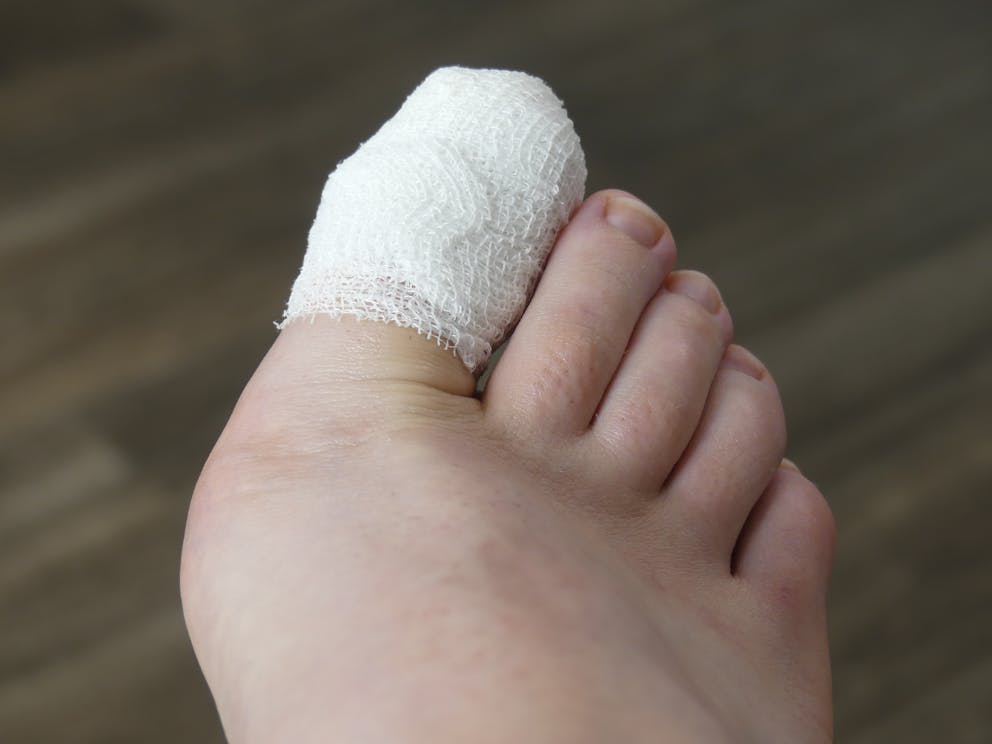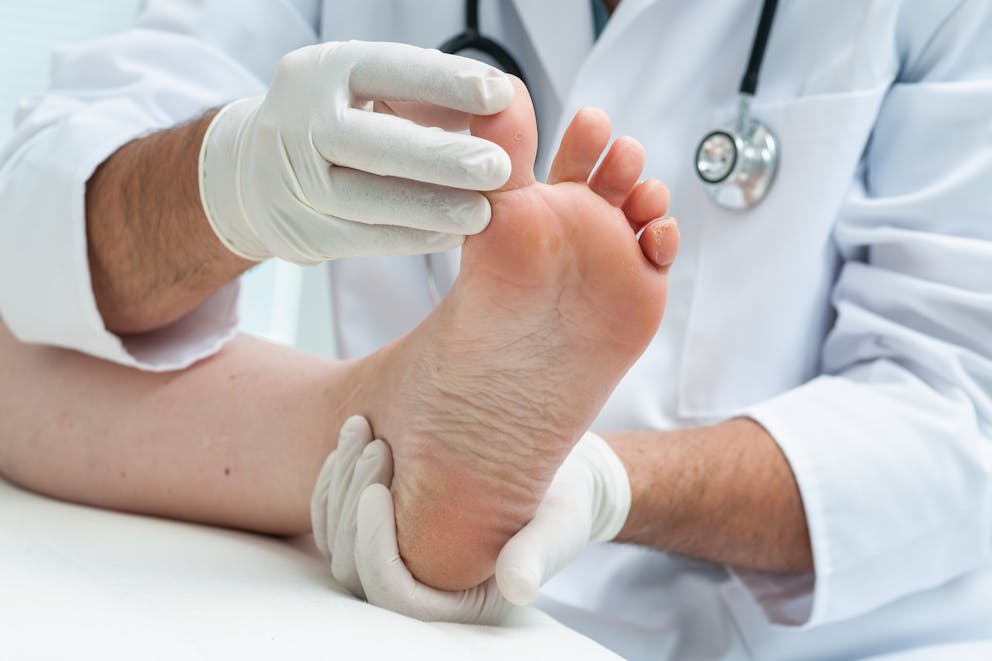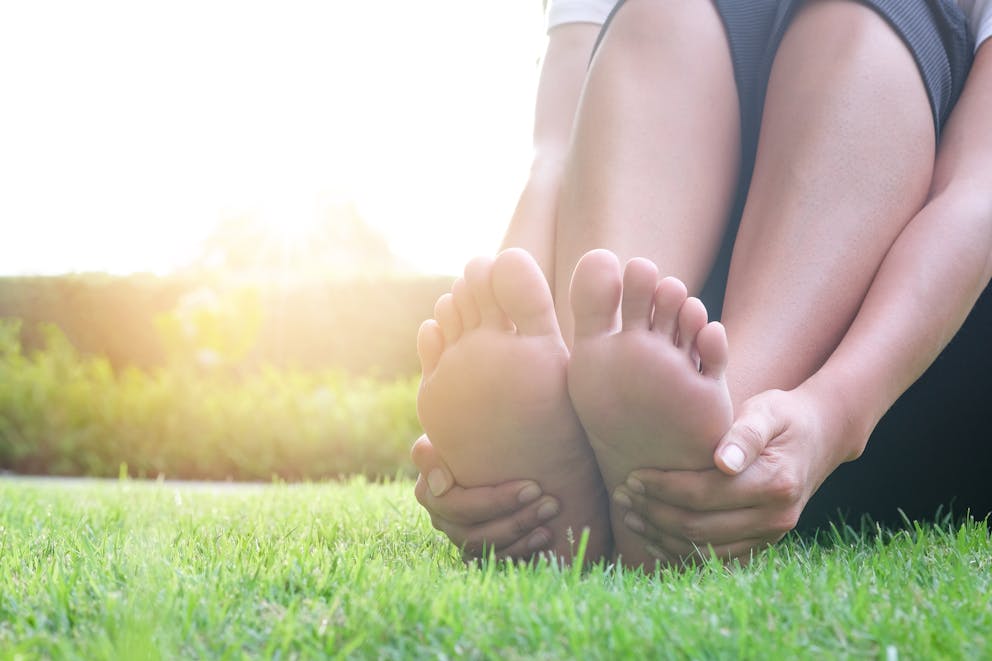How to Heal a Stubbed Toe Quickly

How to Read Your Body
Learn to recognize common symptoms and uncover their underlying health issues
Understand the signs of nutrient deficiencies to manage your health
Explore the four metabolic body types and the core factors that influence them
Interpret your body's signals from head to toe to identify potential health concerns

How to Read Your Body
Learn to recognize common symptoms and uncover their underlying health issues
Understand the signs of nutrient deficiencies to manage your health
Explore the four metabolic body types and the core factors that influence them
Interpret your body's signals from head to toe to identify potential health concerns

How to Read Your Body
Learn to recognize common symptoms and uncover their underlying health issues
Understand the signs of nutrient deficiencies to manage your health
Explore the four metabolic body types and the core factors that influence them
Interpret your body's signals from head to toe to identify potential health concerns

How to Read Your Body
Learn to recognize common symptoms and uncover their underlying health issues
Understand the signs of nutrient deficiencies to manage your health
Explore the four metabolic body types and the core factors that influence them
Interpret your body's signals from head to toe to identify potential health concerns

How to Read Your Body
Learn to recognize common symptoms and uncover their underlying health issues
Understand the signs of nutrient deficiencies to manage your health
Explore the four metabolic body types and the core factors that influence them
Interpret your body's signals from head to toe to identify potential health concerns

How to Read Your Body
Learn to recognize common symptoms and uncover their underlying health issues
Understand the signs of nutrient deficiencies to manage your health
Explore the four metabolic body types and the core factors that influence them
Interpret your body's signals from head to toe to identify potential health concerns

How to Read Your Body
Learn to recognize common symptoms and uncover their underlying health issues
Understand the signs of nutrient deficiencies to manage your health
Explore the four metabolic body types and the core factors that influence them
Interpret your body's signals from head to toe to identify potential health concerns

How to Read Your Body
Learn to recognize common symptoms and uncover their underlying health issues
Understand the signs of nutrient deficiencies to manage your health
Explore the four metabolic body types and the core factors that influence them
Interpret your body's signals from head to toe to identify potential health concerns

How to Read Your Body
Learn to recognize common symptoms and uncover their underlying health issues
Understand the signs of nutrient deficiencies to manage your health
Explore the four metabolic body types and the core factors that influence them
Interpret your body's signals from head to toe to identify potential health concerns

How to Read Your Body
Learn to recognize common symptoms and uncover their underlying health issues
Understand the signs of nutrient deficiencies to manage your health
Explore the four metabolic body types and the core factors that influence them
Interpret your body's signals from head to toe to identify potential health concerns

Easy Keto and Intermittent Fasting
Discover the fundamentals of Healthy Keto® and intermittent fasting
Understand the unique benefits of combining keto and intermittent fasting
Explore what foods to include and avoid on a Healthy Keto diet
Receive practical advice on common pitfalls and how to overcome them
Get a selection of easy-to-make and nutritious recipes to get you started

Easy Keto and Intermittent Fasting
Discover the fundamentals of Healthy Keto® and intermittent fasting
Understand the unique benefits of combining keto and intermittent fasting
Explore what foods to include and avoid on a Healthy Keto diet
Receive practical advice on common pitfalls and how to overcome them
Get a selection of easy-to-make and nutritious recipes to get you started

Easy Keto and Intermittent Fasting
Discover the fundamentals of Healthy Keto® and intermittent fasting
Understand the unique benefits of combining keto and intermittent fasting
Explore what foods to include and avoid on a Healthy Keto diet
Receive practical advice on common pitfalls and how to overcome them
Get a selection of easy-to-make and nutritious recipes to get you started

Easy Keto and Intermittent Fasting
Discover the fundamentals of Healthy Keto® and intermittent fasting
Understand the unique benefits of combining keto and intermittent fasting
Explore what foods to include and avoid on a Healthy Keto diet
Receive practical advice on common pitfalls and how to overcome them
Get a selection of easy-to-make and nutritious recipes to get you started

Easy Keto and Intermittent Fasting
Discover the fundamentals of Healthy Keto® and intermittent fasting
Understand the unique benefits of combining keto and intermittent fasting
Explore what foods to include and avoid on a Healthy Keto diet
Receive practical advice on common pitfalls and how to overcome them
Get a selection of easy-to-make and nutritious recipes to get you started

Easy Keto and Intermittent Fasting
Discover the fundamentals of Healthy Keto® and intermittent fasting
Understand the unique benefits of combining keto and intermittent fasting
Explore what foods to include and avoid on a Healthy Keto diet
Receive practical advice on common pitfalls and how to overcome them
Get a selection of easy-to-make and nutritious recipes to get you started

Easy Keto and Intermittent Fasting
Discover the fundamentals of Healthy Keto® and intermittent fasting
Understand the unique benefits of combining keto and intermittent fasting
Explore what foods to include and avoid on a Healthy Keto diet
Receive practical advice on common pitfalls and how to overcome them
Get a selection of easy-to-make and nutritious recipes to get you started

Easy Keto and Intermittent Fasting
Discover the fundamentals of Healthy Keto® and intermittent fasting
Understand the unique benefits of combining keto and intermittent fasting
Explore what foods to include and avoid on a Healthy Keto diet
Receive practical advice on common pitfalls and how to overcome them
Get a selection of easy-to-make and nutritious recipes to get you started

Easy Keto and Intermittent Fasting
Discover the fundamentals of Healthy Keto® and intermittent fasting
Understand the unique benefits of combining keto and intermittent fasting
Explore what foods to include and avoid on a Healthy Keto diet
Receive practical advice on common pitfalls and how to overcome them
Get a selection of easy-to-make and nutritious recipes to get you started
Stubbed toes are common injuries that happen when you accidentally bump your toes against a hard object or surface. Stubbing your toe often causes severe pain and, in some cases, can lead to toe and forefoot fractures.
Learn how to heal a stubbed toe quickly with a simple technique you can do anywhere.
Why does stubbing your toe hurt so bad?
Your toes contain a high concentration of nerve endings, which explains why a toe injury can be extremely painful.
Toes are also small and delicate compared to other parts of your body, and hitting a hard object can quickly lead to severe injuries, including fractured bones.
Stubbed toe symptoms
The first sign of a stubbed toe is intense pain, often accompanied by throbbing and tenderness.
Most stubbed toes aren’t serious, and the pain typically subsides quickly. Severe cases of stubbed toes can cause more serious symptoms that can persist for several days and may require appropriate medical treatment.
Here are common symptoms associated with a stubbed toe:
Significant pain
Swelling
Limited range of motion
Toenail injury
Bone bruises
Toenail discoloration
A minor stubbed toe may not bruise or discolor. However, a more serious injury can cause a toe fracture, which typically injures blood vessels surrounding the bone and results in significant swelling and foot discoloration.

How to heal a stubbed toe quickly
Although it may seem counterintuitive, massaging the same toe you stubbed on the opposite foot can bring fast pain relief.
“Massaging the stubbed toe’s counterpart activates the nerves in the uninjured foot, which sends signals to the central nervous system and dampens or overrides pain signals originating from the injured toe,” explains Dr. Berg.
Toe massage technique
Immediately after stubbing your toe, sit down and vigorously massage the corresponding toe on the opposite foot to encourage blood flow and stimulate nerve endings.
Massage until you experience pain relief, and repeat as needed.
This technique doesn’t just stop the pain associated with a stubbed toe but also activates electrical circuits within the body that promote healing and reduce swelling, tenderness, and bruising.

How long does it take for a stubbed toe to heal?
Most mild cases of stubbed toes heal within a couple of days. A stubbed toe accompanied by bruising typically improves within four to five days, and applying a cold compress a few times daily helps to reduce swelling and speed up healing time.
Toe injuries with open cuts can increase the risk of toe and foot infections, and it's crucial to carefully clean the wound with an antiseptic and bandage the affected toe with sterile gauze.
Research published in Podiatry Today found that trauma to the nail plate can result in the separation of the nail from the nail bed, increasing the risk of bacterial and fungal infections. It can take 12 to 18 months for a toenail to regrow, which explains why toe injuries that cause the loss of a nail can take significantly longer to heal than most other cases of stubbed toe.

When to see a doctor
While many stubbed toe injuries can be managed at home with basic self-care, some cases require medical evaluation and treatment to prevent long-term foot issues.
It’s generally advised to consult a healthcare provider if you suffer from persistent or sharp pain or your toe appears deformed or misaligned after stubbing your foot. In addition, it’s crucial to seek medical attention if open wounds don’t heal properly or show signs of infection, such as swelling, redness, heat, or a yellow discharge.
Signs of a broken toe
There is a common misconception that broken toes don’t need medical attention.
However, research published in Cureus suggests that ignored toe fractures can have long-term health consequences, including arthritis, impaired range of motion, and foot deformities.
Here are some common signs of a broken toe:
Pain worsens
Sharp pain when moving your foot or toe
Deformed or misaligned toe
Weak or numb toe joint
Severe bruising and swelling

Tips for preventing a stubbed toe
A stubbed toe can be very painful. Luckily, you can take steps to reduce the risk of injuring your toes.
Avoid walking barefoot
You can significantly lower your risk of stubbing your toes by avoiding walking barefoot or in open-toe shoes such as flip-flops or sandals.
Wear appropriate footwear
Wearing well-fitted, comfortable shoes helps to keep your feet protected and stops your toes from impacting on hard surfaces.
If you frequently stub your toes while playing sports or working, consider wearing toe protectors or steel-toed boots.
Certain foot conditions, such as bone spurs or bunions, can increase the risk of stubbing your toe. Wearing supportive footwear helps to manage bunions without surgery and lowers the risk of painful toe injuries.
Declutter
Remove potential obstacles such as shoes, toys, or boxes that clutter walkways and stairs. Keeping your surroundings clear will minimize the risk of accidentally stubbing your toe.
Maintain good posture and balance
Having a good posture and balance can help prevent stubbed toes.
Regular core exercises and maintaining a healthy weight can significantly reduce your risk of accidental falls or tripping over.

Key takeaways
If you ever hit your toe hard, you may have wondered how to heal a stubbed toe quickly.
Vigorously massaging the corresponding toe on the opposite foot activates nerve signals that can block pain signals radiating from the injured toe.
Not only does this simple technique stop pain and discomfort, but it also stimulates healing and helps to reduce swelling and bruising.
FAQ
1. What is the best treatment for a stubbed toe?
The fastest way to heal a stubbed toe is by massaging the affected toe on the opposite foot to activate nerve signals that block pain sensations from the injured toe reaching the brain.
2. Can you break a toe by stubbing it?
Yes, it’s possible to break a toe by stubbing it. If you suspect that you have broken your toe, it is important to see a healthcare professional immediately.
3. How do I know if my toe is broken or just stubbed?
A stubbed toe doesn't show signs of misalignment and usually improves within a couple of days. A broken toe typically worsens and is accompanied by swelling, sharp pain, and significant bruising.
4. What does a badly stubbed toe look like?
A badly stubbed toe is often very painful and tender and can appear swollen. In some cases, stubbed toes can develop bruising and may show signs of damage to the nail bed.
5. Does icing a stubbed toe help?
Yes, icing an injured toe can help reduce swelling and pain.
6. How long does stubbed toe pain last?
The initial sharp pain of a stubbed toe typically lasts no longer than an hour. However, more severe cases of bruised and swollen toes can cause pain and discomfort for a few days.
7. How long will it take for my stubbed toe to heal fully?
Mild cases of stubbed toe tend to heal within a day. A stubbed toe that is more seriously injured can take up to four days to resolve.
8. When should I see a doctor for a stubbed toe?
It’s crucial to consult a doctor if your toe shows signs of deformity or misalignment or is accompanied by significant bruising or swelling. These symptoms can indicate a broken toe, which can lead to long-term foot issues if left untreated.
Previous blog
Diet for Critical PeopleNext blog
How to Lose Your Beer Gut PotbellyTags

Popular
08/21/2024
40.4K views
05/22/2024
36.9K views
08/19/2024
214.9K views
03/18/2024
11/21/2022




